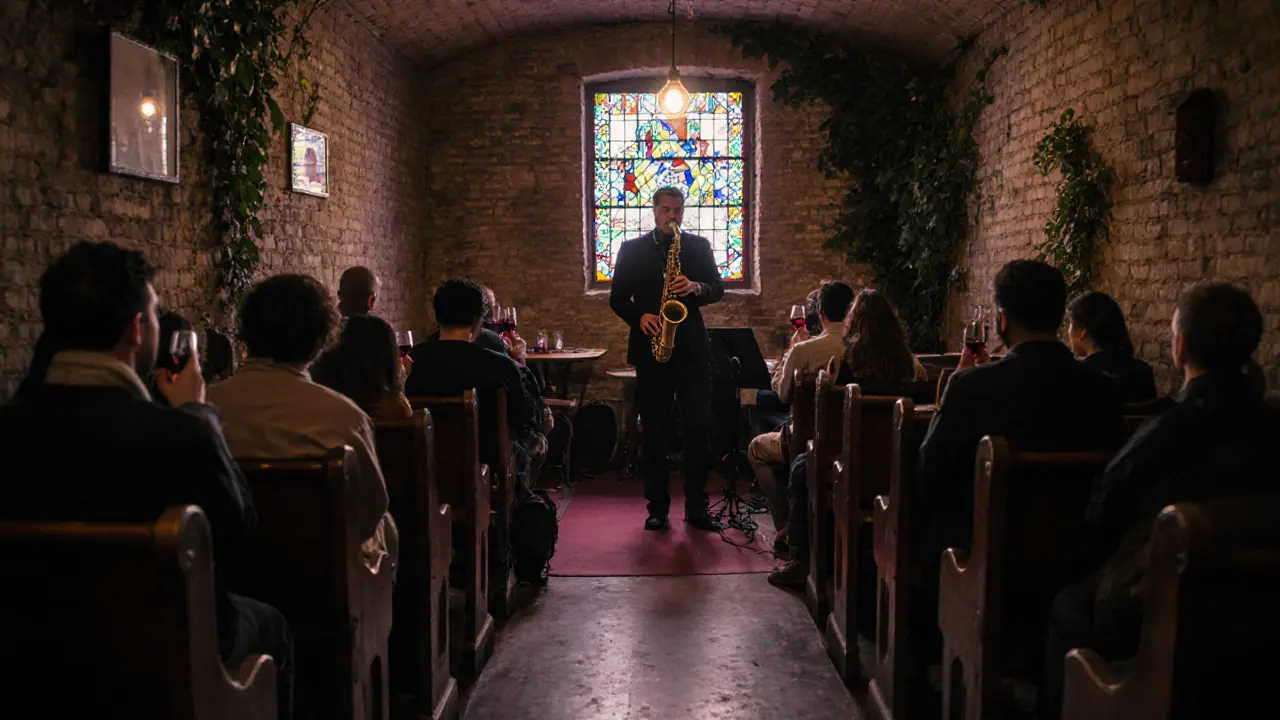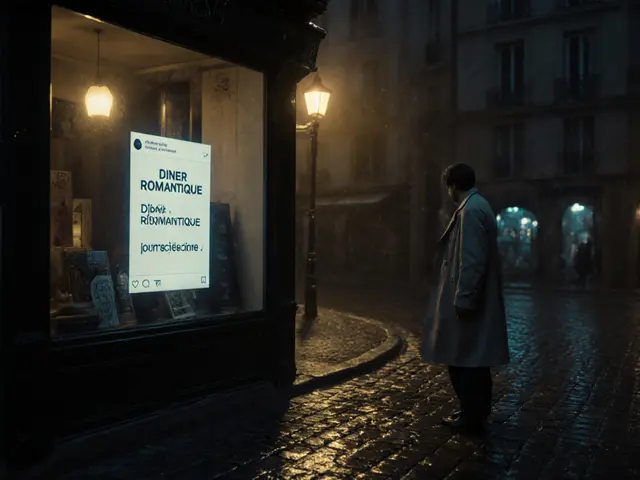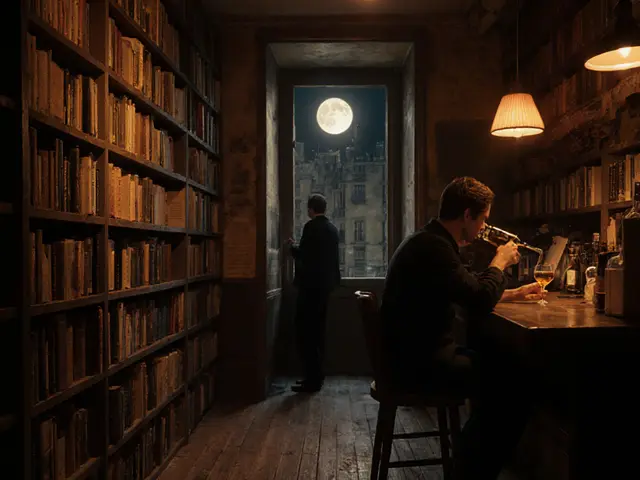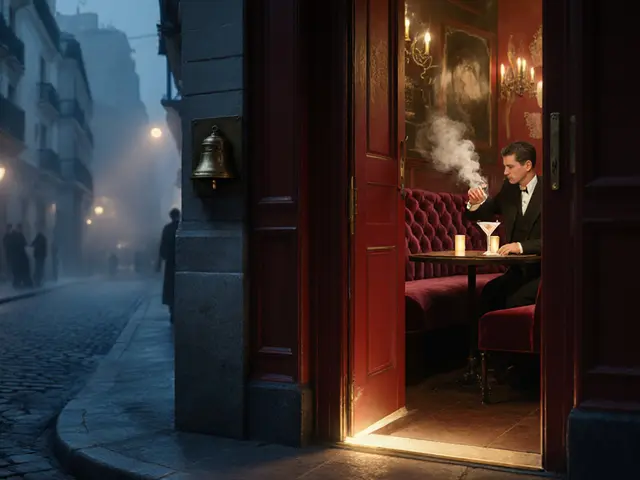Best Kept Secrets of Paris Nightlife: Hidden Bars, Underground Clubs, and Local Hotspots

Most tourists think Paris nightlife means crowded cafés on the Left Bank, touristy cabarets in Montmartre, and overpriced champagne at rooftop lounges. But if you’ve ever wandered past a dimly lit doorway in the 10th arrondissement and heard faint jazz drifting out, or spotted a line of locals waiting patiently outside a shuttered-looking building at 1 a.m., you already know the real Paris doesn’t show up on Google Maps.
The Hidden Speakeasies Behind Unmarked Doors
Paris has more than 200 hidden bars, but only a handful are truly secret. One of the oldest is Le Chien qui Fume in the 11th. You won’t find a sign. Just a small brass bell beside a red door. Ring it. If someone answers with a quiet "oui," you’re in. Inside, it’s 1920s Paris reimagined: velvet booths, candlelit tables, and bartenders who mix cocktails using house-infused spirits you won’t find anywhere else. Their signature drink, the "Mystic Rue," blends Armagnac, smoked pear syrup, and a dash of black pepper. It costs €18, but you’ll remember it longer than your Eiffel Tower photo.
Another is Le Syndicat, tucked under a bakery in the 9th. You walk through the pastry case, and behind the flour-dusted shelves is a narrow staircase. Downstairs, it’s all dark wood, vintage vinyl spinning on a turntable, and a menu that changes weekly based on what the bartender finds at the Marché des Enfants Rouges. No menus. Just a whispered recommendation: "Try the gin with cucumber and elderflower. It’s like drinking a Parisian morning."
Where the Locals Dance (And No Tourists Are Allowed)
Most people think of Berthillon or Le Baron when they imagine Paris clubs. But the real after-hours scene starts after 2 a.m., when the tourist buses leave and the locals head to places like Le Très Petit Club in the 20th. It’s not a club-it’s a converted garage. No bouncer. No cover charge. Just a single red light above the door and a playlist that mixes French electro, Congolese rumba, and 90s trip-hop. The crowd? Artists, musicians, and students who’ve been coming here since the early 2000s. You won’t see a single selfie stick. You’ll hear laughter, clinking glasses, and the occasional burst of French singing.
Down in the 13th, La Station operates out of a disused metro station. The walls are still covered in faded 1970s tiles. The sound system? A custom-built setup by a local engineer who used parts from old Parisian streetcars. The music? Deep house and ambient techno, played by DJs who’ve never posted on Instagram. The rule? No phones on the dance floor. If you’re caught taking a video, you’re asked to leave. No argument. No drama. Just a quiet nod and a hand pointing to the door.
The Rooftop That Doesn’t Look Like a Rooftop
Everyone knows the rooftop bars at the Shangri-La or the Mandarin Oriental. But the best view of Paris at night isn’t from a luxury hotel. It’s from Le Perchoir Marais-but not the one you’ll find on TripAdvisor. There’s a second location, hidden behind a bookshop on Rue de la Verrerie. Access is through a narrow alley. No sign. Just a wooden door with a small plaque that reads "Librairie des Étoiles." Go in. Buy a €3 coffee. The owner will nod toward a back staircase. Upstairs, you’re on a rooftop with no railings, just mismatched armchairs and string lights. The view? The entire Notre-Dame dome, the Seine glowing under moonlight, and the silhouette of the Montparnasse Tower in the distance. No drinks are served up here. Bring your own wine. It’s legal. And it’s the only place in Paris where you can watch the city breathe.

Midnight Jazz in the Basement of a Church
On Friday nights, the basement of Église Saint-Merry in the 4th turns into a jazz club. No tickets. No reservations. Just show up. The church has been closed for services since 2019, but the organist, a retired conservatory professor named Henri, still plays every week. He invites local musicians-saxophonists from the conservatory, trumpet players from Senegal, a pianist who used to play in New Orleans. The crowd? Mostly locals in their 30s and 40s, sitting on folding chairs, sipping cheap red wine from plastic cups. The acoustics? Perfect. The walls absorb sound like velvet. The energy? Electric. You’ll hear a 70-year-old woman singing Louis Armstrong in perfect pitch while a 22-year-old drummer keeps time with his feet on a wooden crate. No one claps. They just nod. And when the last note fades, someone whispers, "Merci, Henri."
The 3 a.m. Snack Spot Only Locals Know
After hours, when the clubs close and the metro stops running, Parisians don’t head to McDonald’s. They go to Le Petit Cambodge, a tiny Pho spot in the 13th that opens at 2 a.m. and closes at 6 a.m. The owner, a Cambodian immigrant named Maly, has been serving steaming bowls of beef noodle soup since 2003. It’s not fancy. No neon sign. Just a plastic curtain and a single fluorescent bulb. But the broth? Simmered for 18 hours. The herbs? Hand-picked from a garden in the suburbs. The price? €7.50. You’ll see bankers in suits, artists in paint-splattered jeans, and taxi drivers all hunched over the same small table, slurping soup in silence. It’s the only place in Paris where everyone is equal after dark.
What to Avoid
Don’t go to clubs that advertise "Parisian Experience" on their Facebook ads. Those are designed for tourists. Avoid bars with English menus unless they’re run by expats who’ve lived here for over a decade. Don’t follow Instagram influencers to "secret spots"-they’re usually paid to be there. And never, ever try to take photos inside a speakeasy. It’s not just rude-it’s a fast way to get banned.
Paris nightlife isn’t about being seen. It’s about being present. The magic isn’t in the glitter or the VIP lists. It’s in the quiet moments: the bartender who remembers your name, the stranger who shares their umbrella in the rain, the jazz note that lingers long after the music stops.

When to Go
Best nights: Thursday to Saturday. Most hidden spots are quiet on Sunday and Monday. Avoid August-most locals leave Paris, and the city feels hollow. October to May is the real season. The air is crisp, the streets are quieter, and the energy is warmer.
How to Find More
Ask a local bartender for a recommendation. Not the one at your hotel. The one at a small wine bar near your apartment. Say: "Où vont les Parisiens quand ils ne veulent pas être trouvés?" (Where do Parisians go when they don’t want to be found?) They’ll smile. And then they’ll tell you.
Are these hidden spots safe at night?
Yes, but only if you follow local cues. These spots are tucked away for a reason-they’re not meant for strangers. Stick to places where locals are clearly comfortable. Avoid isolated alleys after 3 a.m. and always trust your gut. If a place feels off, leave. Most of these venues have regulars who look out for each other.
Do I need to speak French to get in?
Not fluently, but a simple "Bonjour," "Merci," and "S’il vous plaît" go a long way. Many bartenders and door staff speak English, but they appreciate the effort. If you try to barge in without saying anything, you’ll be turned away. Politeness is the real key.
Can I take photos inside these places?
Almost never. These spots rely on privacy. Taking photos is seen as a violation, not a compliment. If you want to remember the night, remember the taste of the drink, the sound of the music, the way the streetlights looked through the window. That’s the real souvenir.
What’s the dress code?
Casual, but intentional. No flip-flops, no tracksuits, no loud logos. Think dark jeans, a clean shirt, a good pair of shoes. You don’t need to dress up-just don’t look like you just rolled out of bed. Locals care about effort, not luxury.
Are these places expensive?
Not at all. Most hidden bars charge €12-€18 for a cocktail. Clubs have no cover. The 3 a.m. noodle spot is €7.50. You can have an unforgettable night in Paris for under €50, including transport. The real cost? Your willingness to wander off the beaten path.
Next Steps
Start tonight. Pick one spot from this list-just one. Walk there without using GPS. Let yourself get lost for 10 minutes. Look for the red door, the bakery shelf, the bookshop with the wooden sign. When you find it, don’t rush. Sit. Listen. Let Paris reveal itself. The city doesn’t show its secrets to those who ask. It shows them to those who wait.



